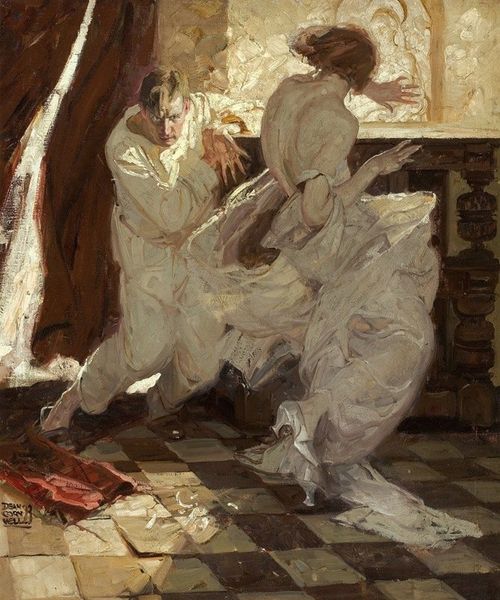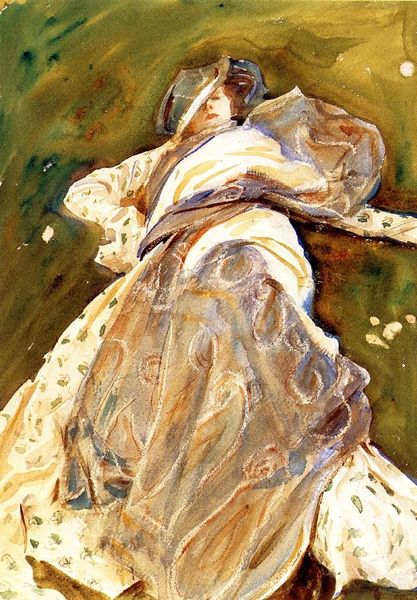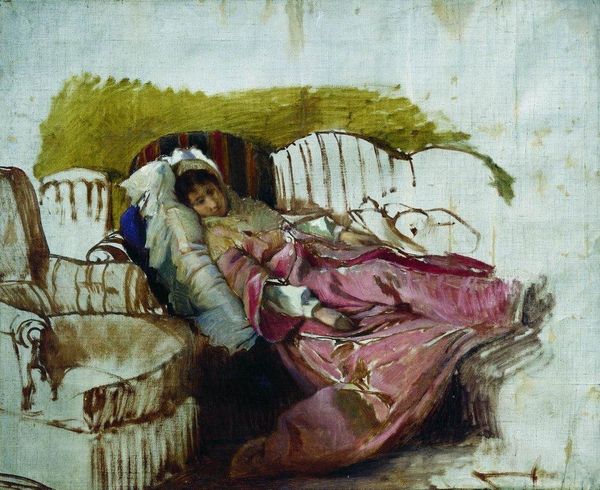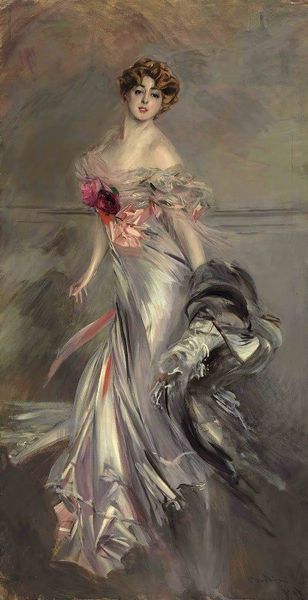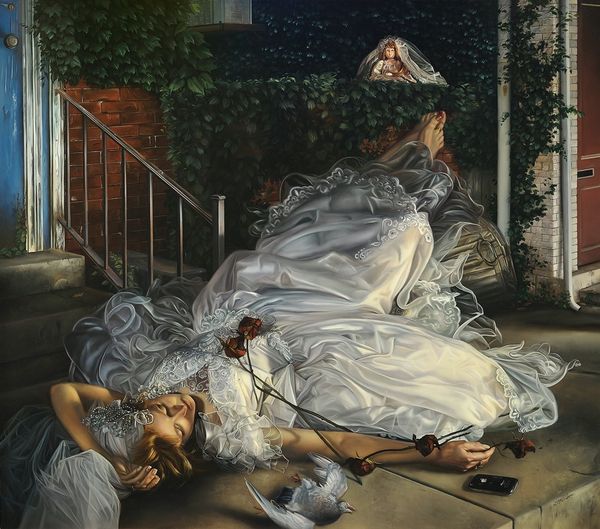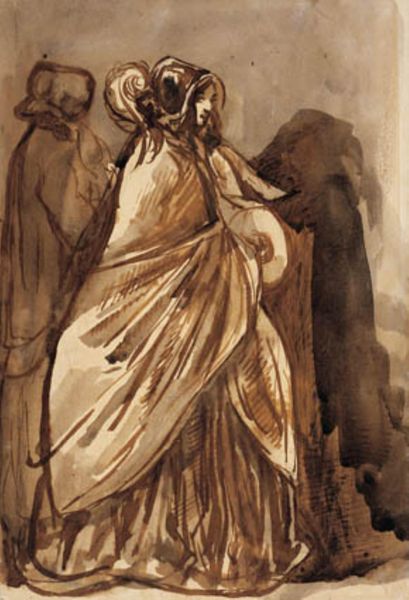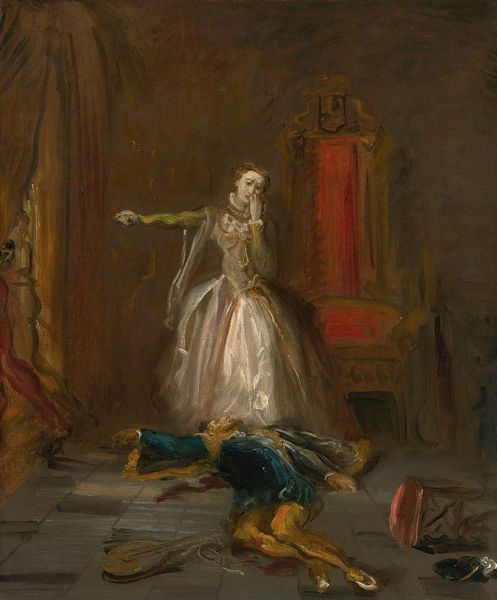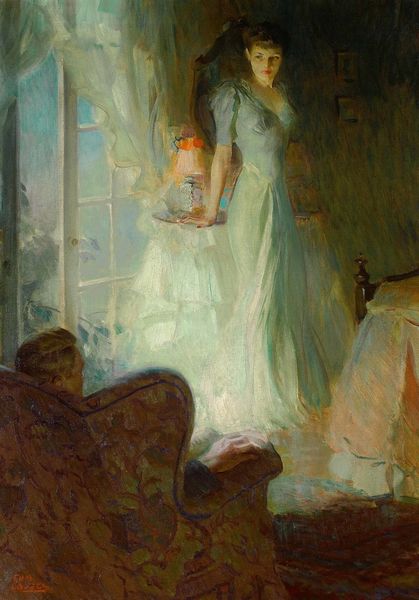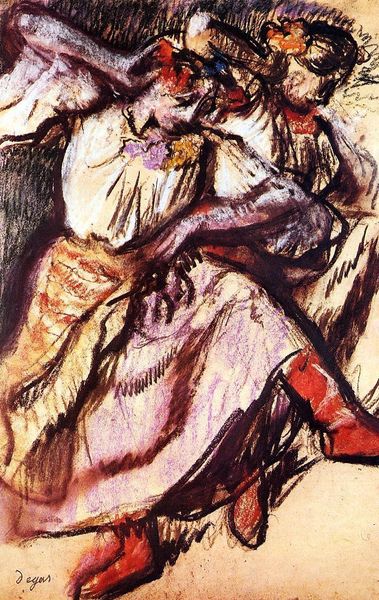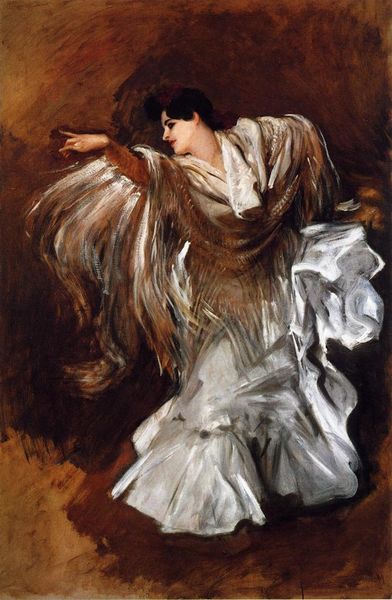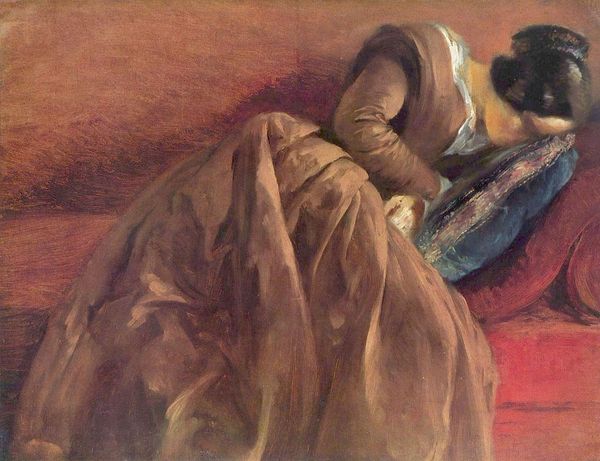
pastel
#
portrait
#
figuration
#
possibly oil pastel
#
oil painting
#
intimism
#
symbolism
#
pastel
#
history-painting
#
portrait art
#
fine art portrait
Copyright: Public domain
Editor: Edwin Austin Abbey's "La reine dans Hamlet" from 1895, possibly an oil pastel, depicts Queen Gertrude in what appears to be a moment of profound contemplation, perhaps even despair. I am intrigued by its theatricality and use of light and shadow. How does Abbey use visual language to communicate her emotional state, given the context of Hamlet as a popular piece of media at the time? Curator: Well, consider that Abbey was a successful illustrator who knew how to tell a story through imagery. This wasn't just a portrait; it was intended to evoke a character at a pivotal moment in a play audiences already knew and had specific ideas about. The Symbolist movement, influencing much art at this time, prized ambiguity, and using historical references allowed artists to speak about society without explicit claims. Editor: I see that now that you point it out; It feels very deliberate. Was the decision to use pastel over oil related to the role that this illustration would eventually play? Curator: Perhaps. Pastel lends itself to creating subtle and nuanced skin tones which allow audiences to empathize and put themselves in the mind state of Gertrude. But Abbey was thinking of his audience. Remember the culture surrounding theatre at this time was a very public sphere that could bring about debates from a diverse range of individuals; by adopting historical methods from academic styles in a non-academic piece, the intention could have been to elicit discourse from various groups through easily digested material. Who do you imagine this image would primarily speak to at the time? Editor: I didn't really consider the social implications like that, the ways in which it's inviting debate from distinct circles. The figure does suggest refinement... perhaps the upper class since they were primary consumers of theatrics at that point. Curator: Exactly. Art wasn't created in a vacuum. It's always communicating with a specific audience, participating in larger cultural conversations. Editor: So, analyzing it within that historical framework truly changes my perception of what the piece is doing, more than just presenting! Curator: It reveals the intricate layers of meaning behind seemingly straightforward imagery. Hopefully you can better think about approaching works such as this moving forward.
Comments
No comments
Be the first to comment and join the conversation on the ultimate creative platform.
